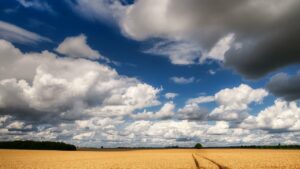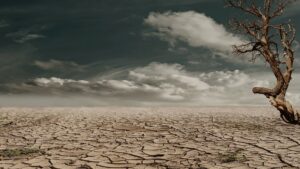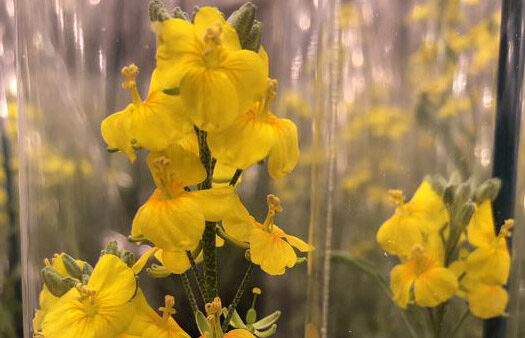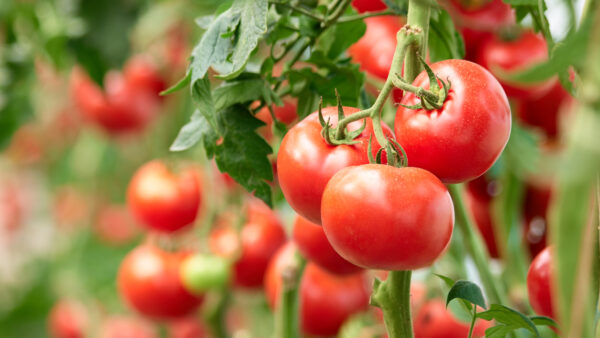Industry analysts say those involved in today’s seed business and agriculture are in for some big bumps in the road.
While Mother Nature tends to wreak havoc on agricultural production systems in North America, those in the industry say she will likely become more variable during the next decade.
Jerry Hatfield, laboratory director and supervisory plant physiologist with the U.S. Department of Agriculture’s Agricultural Research Service believes the biggest change for farmers in the next 10 years will be increased variability in precipitation and temperature levels. “It’s likely that farmers will experience growing seasons with fluctuations beyond what they have previously seen on the farm.”
The Intergovernmental Panel on Climate Change is the world body for assessing the science related to climate change and in November 2014 released its fifth assessment on global climate change with some future warnings. According to the report’s authors, “If left unchecked, climate change will increase the likelihood of severe, pervasive and irreversible impacts for people and ecosystems. However, options are available to adapt to climate change so that the impact remains within a manageable range.”
Prepare For The Inevitable
According to industry analysts the real question is how do you get prepared in order to cope with current and future fluctuations in temperatures and precipitation? The preparation list is long, and Hatfield says anyone in the business of agriculture has many issues to consider. “You need to be thinking of managing soil to store water,” he says. “Additionally, you’ll need to consider the genetics you’re putting into that soil and give serious thought to nutrient, pest and disease management.”
Hatfield says researchers are still trying to understand the direct and indirect impacts of climate change to agriculture. “Many facets of the industry are working on building predictive tools,” he says. “As part of this, some researchers are looking at how to use information in new ways.”
During the past decade the use of GPS technology and remote sensor monitoring have taken many farm businesses to new levels of management. Hatfield believes that agriculture as a whole will continue to adopt new advancements in technology to mitigate risk.
Advancements in the agricultural sector are growing by the day, and seed companies are also tackling the issues of climate change. Trevor Hohls, lead for Monsanto’s global soybean team, says climate change’s impact to farming has been a top priority for his team for a number of years. “We have taken a systems approach to agriculture in the past five years, which spans not only plant breeding and biotech technology but also integrating data and management,” Hohls says. “There is no longer an average or normal year. It’s essential that we continue our plant breeding efforts and identify products that can handle greater variability.”
Hohls says Monsanto is screening soybeans for their durability to in-field conditions, but they are also creating artificial conditions at research stations that might occur as a result of climate change. Hohls notes that the company’s Genuity DroughtGard hybrids offer farmers a new level of security to help mitigate risk when experiencing drought stress.
“We were able to offer this new product in 2013, and its yield performance in extreme conditions did not disappoint,” Hohls says. “These hybrids performed well — 40 bushels higher than competing products under the same stress conditions.”
However, Hohls notes that collaboration across companies and between private and public entities in the industry is key to bringing new technologies to the marketplace.
Monsanto’s not the only one focused on helping farmers better cope with a changing climate. Chris Tingle, Syngenta head of water optimization, says his team is focused on water optimization for crops. “We’re looking at static resources, as water in some regions is a declining resource,” Tingle says.
Syngenta developed Agrisure Artesian, which is available today. Tingle notes that this breakthrough will help farmers meet climate change challenges head-on in both good and bad years. The Artesian technology helps to maximize yield when it rains and increases yield up to 15 percent when it doesn’t rain. “In the past two years on the market, this product, in terms of drought tolerance, surpasses standard hybrids,” Tingle says.
Additionally, Bayer CropScience is working on a variety of technologies and services to support the production of crops for today and into the future. “We see water management as a key focus, and tools that improve growers’ ability to either reduce irrigation or optimize performance for their average annual rainfall will be attractive attributes,” says Jeff Donald, a Bayer CropScience spokesman. “Other technologies in our research and development platform include genetic adaptation, pest management, crop efficiency and supporting decision tools that assist growers in sustainable crop production.”
Future Technologies
Hatfield believes that while the tried and true approach such as proper crop rotations and scouting fields will remain essential to best management practices on the farm, the industry needs to better understand farmers.
“We need to understand how producers perceive risk and that includes genetics, the environment and management techniques,” Hatfield says. “Optimal hybrids will not be enough down the road, we also need to understand how producers implement certain farm practices, such as disease and pest management.”
Coping with climate change will take a diverse effort, but Hatfield is optimistic with improved genetics and new technologies that can improve soil capacity and capture water resources. “More and more we are conducting on-farm trials versus research fields, which allows farmers to get the full picture of new technologies and provides researchers with feedback from farmers on large-scale operations,” Hatfield says. “It’s an effort to better understand on-farm conditions and the constraints of a particular region. It’s a journey of discovery on both parts to help bring adaptive management techniques to the farm level.”
For Monsanto the acquisition of The Climate Corporation is an exciting addition to help understand climate impacts. Hohls explains that the company provides environmental modeling that can help producers in their decision-making process. “This really brings a whole new level to understanding regional environments,” explains Hohls. “Now with the addition of detailed weather and mapping data, it provides field-level predictions of of the environment. Data and knowledge is crucial to providing the right recommendations.”
In 2013, Syngenta started trialing its Water Plus Irrigation Pilot project, which targets growers in Nebraska and Kansas where the use of irrigation is commonplace. The project is expected to expand for the 2015 growing season. “Through the use of field mapping technology from Lindsay Corporation, growers were able to use their smart phones and computers to monitor and adjust irrigation rates remotely,” Tingle says. “Corn yields increased anywhere from 7 to 9 bushels while decreasing the irrigation by 20 to 40 percent.”
Syngenta is also working to address abiotic stressors caused by disease, extended wet periods, and cold and heat conditions through trait and chemistry development.
Adaptability and Adoption
Hatfield believes producers need to be aware that conditions are changing. “They will see increased variability in temperatures and precipitation but also increased pressure from insects and disease,” he says. “They will have to pay close attention to their environment.”
Hohls doesn’t expect to see a major shift to non-traditional crops but notes that shifting growing conditions will have an impact. “A grower might need an earlier maturing variety or variety that has a higher tolerance to cold,” Hohls says. “We will all have to keep up with the impacts of climate change.”
According to Syngenta’s Tingle, the industry will have to tackle climate variability in two different ways. “We will need to face the year-on-year challenges by minimizing the response to extremes — the highs and lows,” he says. “And second, address variability within a year or within a specific field.”
The one issue that remains is that climate change will continue to bring more challenges to the agricultural industry as a whole. However, ongoing research and new technologies entering the marketplace show that the industry, from seed companies to researchers and farmers, are already making adjustments.
To read the complete report from the Intergovernmental Panel on Climate Change released in November 2014 go to:
ipcc.ch/pdf/ar5/prpc_syr/11022014_syr_copenhagen.pdf














